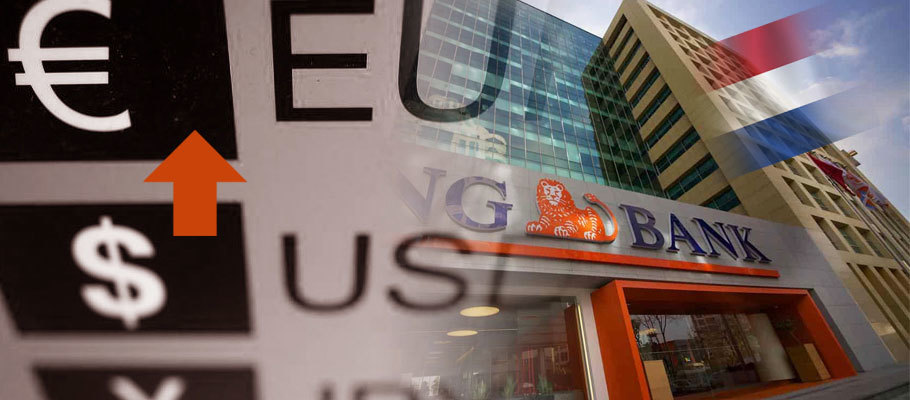
Published: January 11th, 2023
The Euro to US Dollar exchange rate has regained a level not seen since June 2022 after extending a strong recovery. A strong Euro is finding support from Eurozone energy markets and a retreat by the Greenback driven by economic data. Analysts at one major European bank believe further gains are possible.
EUR/USD began the year on the back foot as it retreated from transitional highs against a recovering Greenback, but after a retracement it leapt to a multi-month high on Monday 9th January, as forex traders quickly discounted rumours of an end to the US Federal Reserve's interest rate hiking cycle.
In a note to investors, analysts at ING Bank’s FX analysis unit said the pair ‘has been impacted by a Dollar sell-off and market bias could send it even higher. We are seeing parallels with the summer of 2007 when a slowdown in America’s housing market gave rise to expectations that the Fed would have to take its foot off the gas.’
Reviewing the price action that dominated the pair that year, ING said American two-year bond yields disintegrated to 2.6 per cent after experiencing trade in the 4.5 to 5 per cent range for the first half of the year. By December 2007, EUR/USD had rallied back by 10 per cent.
The Greenback tracked American yields higher last year as global investors looked for better returns, therefore USD would be expected to retreat if this bond market dynamic went into reverse. ING says this is currently what’s happening.
The ECB said in December 2022 that it was ready for two more interest rate rises of 50 basis points, catching investors off-guard as they were gauging whether Frankfurt would slow down.
The US Fed has signalled in the meantime that it will ease back soon. Forex traders are now looking for one more 25 basis point hike, below what the ECB seems to have ‘priced in’.
In June, EUR/USD was trying to climb out of a trough that saw it sink to five-year lows. EUR needed intervention from the European Central Bank (ECB) to beat an already hawkish Dollar market and sustain its recovery momentum ahead of the latest US inflation data print.
The single currency gained substantial support from a hawkish market that re-priced its expectations for ECB interest rate action in advance of the central bank’s late June policy meeting.
The meeting announced the end of Frankfurt’s last and longest running quantitative easing (QE) programme, while providing insights into the future path of European interest rates.
However, forex traders were focused on anything that signaled the ECB’s likely policy direction in July and September, particularly any guidance about the lift Eurozone interest rates could get in July.
In a note to investors, Barclays European Economics Unit said that EUR/USD could rise in the Summer ‘thanks to a more hawkish European Central Bank coming out of Friday’s meeting and a weaker Dollar. In that scenario we believe upside resistance at 1.0789 will be tested.
‘We will be closely monitoring post–meeting communications from the June meeting for indications that the tightening cycle is going to become more aggressive. There is even a small possibility that the ECB decides to raise rates this week.’
EUR started 2022 on sturdy political tailwinds out of Italy, when markets reacted warmly to the appointment of neoliberal technocrat Mario Draghi as Italian Prime Minister.
After President Sergio Mattarella was re-elected in January, analysts thought the election result would establish policy continuity and enable Draghi to move ahead with EU-mandated policy changes required to obtain EUR 200 billion in EU funding.
Analysts at the time said Mattarella’s return to power was positive news for markets and a euro rally off the back of the news got underway. The EUR/USD rate also rose from a multi-month low seen the previous week.
It was clear however that chart trends were still favouring USD in the short term, with the future outlook depending then, as now, on announcements from the next ECB policy meeting.
Frankfurt avoided making major changes to interest rate policy at its February meeting, but did flag its concerns about early indicators of rising inflation, both in the Eurozone and globally.
Consensus at the time looked for ECB bankers to raise rates by the end of this year, with the Euro outlook driven by whether or not Frankfurt policymakers met that expectation.
A market analysis of Euribor prices suggested that investors were moving their expectations for the timing of an ECB rate rise forward, with December 2022 seen as the most likely date. This was, of course, all before the conflict in Ukraine and its knock-on effects to energy and food prices.
At the time, Frankfurt kept its dovish approach on expectations that inflation would fade by mid-year and that any risk of inflation staying above the bank’s two per cent target was small.
Some analysts did note that even if the ECB stayed the course on rates, EUR/USD exchange rate could continue to rise.
That's because the Greenback started 2022 on the back foot, shrugging off strong buying interest that followed the Fed's December 2021 policy update. That slump would give EUR/USD upside momentum if sustained.
Reuters said EUR/USD would likely keep rising while analysts at Barclays currency strategy unit also believed the dollar could face headwinds
In an interview with Bloomberg, they said conditions pointed to short positions on the Greenback as a ‘tactical entry point’ since the market might now be ready to sell USD after a brief uptick in buying seen the previous week.
Forex markets, they said, have a tendency to revert on trends seen in January, suggesting that any USD strength would start to unwind as the month and quarter progressed